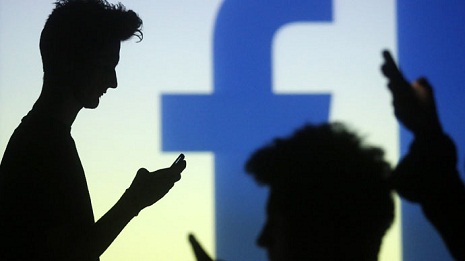Something one (let’s call him Jim) said has always stuck in my mind since: “I’d take 10 British infantry for 40 of ours.” Did he mean the Brits were better fighters? “No, our guys are better in combat.” So what then? “They are smarter. I can’t explain it. They don’t need to fight as much. The locals like them,” ‘Jim’ explained.
What my, temporary, imbibing companion was getting at was the so-called ‘battle for hearts and minds’. While the gung-ho US army has relied on brute strength and sheer force in recent conflicts, Britain’s diminished circumstances have forced its military to adopt friendlier tactics. This could be called, the `don`t shoot, smile` technique.
Now, the chief of the British Army, General Sir Nick Carter, plans to introduce what can only be described as a social-media division to the force. The 77th Brigade will, from April, number around 2,000 and specialize in ‘non-lethal warfare’. What this means is that, in the digital age, they will attempt to control the news narrative - one assumes within and without battle.
Following the Chindits
Doubtless, IS’ slick (and sick) online propaganda is the immediate inspiration for the ‘Facebook Army’, but the 77th goes back a long way. It was the designation of the Chindits, a British guerrilla force used in Japanese-held Burma during WWII. Led by Major General Orde Wingate, its unorthodox tactics - which today might be called psych-ops - produced successes far more numerous than its manpower would normally have allowed it achieve.
As media folk on Twitter can testify, the groundwork for this new direction has been simmering for some time. A few years ago in Syria, we were introduced to the concept of ‘geo-tagging’ as a tool to prove or disprove stories. The most famous proponent was the English blogger Eliot Higgins (known as ‘Brown Moses’), who rose to prominence by tracking weapons movements from his living room in Nottingham.
Higgins’ technique was a game-changer. By using video available on social media and open-source mapping applications, the Brit introduced a new style of verification. The jury is still out on how trustworthy it is, and how easily it can be manipulated, but there’s no doubting its effectiveness.
Social-media game changer
Higgins seems like a decent man and I’m not going to insinuate for one second that he’s got an unseen agenda at play. I’m inclined to believe that his intentions are genuine. However, now we have to analyze a situation where 2,000 trained specialists are, perhaps, not as noble in their purpose as Eliot Higgins.
Journalists who use social media look at the service as a double-edged sword. On one hand, it allows direct communication with readers and other media professionals, which can be appealing. However, new media also allows anonymous accounts to bully, and even stalk, reporters and writers they don’t agree with. Twitter is especially horrible in this regard. This is not fun, and increasingly journalists are withdrawing from the platforms, citing psychological strain. You always had to have a fairly thick skin for this game, but soon it may need to be Rhino-like.
While many forecast that social media would ‘democratize’ news, it appears the opposite is happening. The nature of a service like Twitter actually discourages independent thought, and those inclined to it are quickly slapped down by the ‘hive’. Ironically, its theoretical openness serves to breed conformity. This is what General Carter is counting on. The future will be continuous information warfare.
Take the current conflict in Ukraine. The amount of disinformation from both sides is enough to create constant dizziness. Not to mention the fanatical ‘keyboard warriors’ who seem to spend 16 hours a day ‘working’ for their chosen side. How they manage to find time for daily tasks is beyond me, let alone how they earn a living.
New style of warfare
As I’ve noticed during the Ukrainian civil war, when a major incident happens, both sides are quick on the Twitter draw to blame each other. Supporters of the pro-Kiev side - who generally hail from Europe and the Canadian diaspora - are far more proficient in English than their opponents and this yields them an advantage. They can generate hundreds of Tweets ‘proving’ that the rebels committed an outrage within minutes of it happening.
Of course, journalists can be influenced by this. Even more so when they are subjected to a barrage of Tweets admonishing them for being ‘Kremlin shills` or ‘Kiev toadies’. Anybody who wouldn`t feel some emotion under such pressure wouldn’t be human. Indeed, this week, a British pro-Kiev Twitter supporter, who is associated with the Khodorkovsky-funded Interpreter Blog, tweeted a list of well-known journalists he believed to be ‘Russian propaganda’ agents.
While one, mentally unstable, individual with an anonymous Twitter account can’t do too much harm, imagine 2,000 highly-trained and disciplined British soldiers operating a deliberate disinformation campaign? The pressure on journalists would be intolerable.
The UK’s decision to, officially, weaponize information is a decisive moment in the evolution of modern combat. It’s surely inevitable other major powers like the USA, Russia, China and France will follow suit. The end result might be that platforms like Facebook and Twitter become so discredited as news sources that the IT giants drown under the weight of propaganda. On the other hand, traditional media companies might just continue the trend towards no longer striving for even the pretense of balance in their coverage. Either way, the biggest losers are consumers seeking the truth in the news.
More about:















































